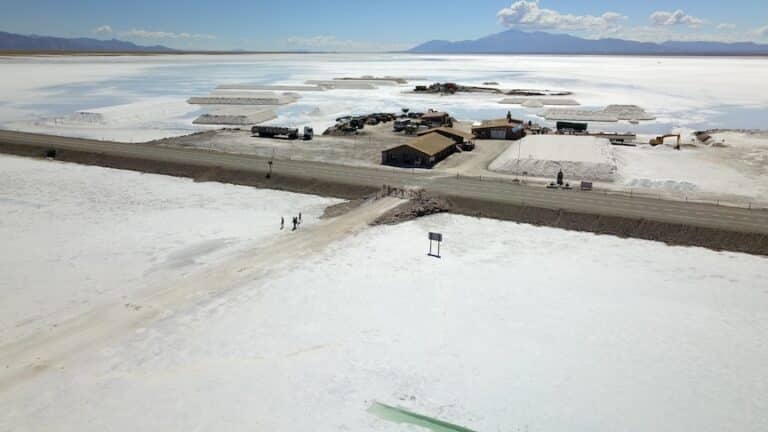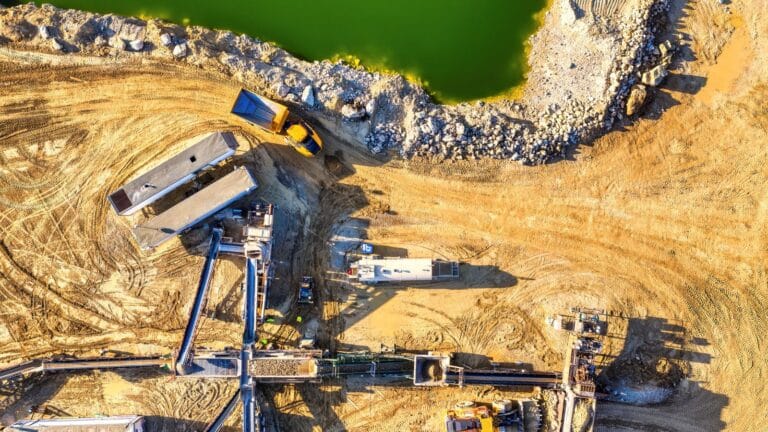On May 2nd, Chile’s Environmental Assessment Service (SEA) rejected Los Bronces Integrado,[1] a $3 billion copper expansion project near Santiago. According to local legislation, Anglo American, the project operator and its main shareholder (the other shareholders are Chilean state-owned Codelco and the Japanese corporations Mitsui and Mitsubishi), can still appeal the decision of the SEA, and the future of Los Bronces Integrado may well end up being resolved by the Supreme Court.
But regardless of how this story ends, its evolution is just another reminder of how difficult it has become to develop new mining projects, and offers a good opportunity to discuss the role of copper in the fight against climate change.
In this piece, Juan Carlos Jobet, Chile’s former minister of energy and mining and a distinguished visiting fellow at the Center on Global Energy Policy, takes stock of the current push and pull around copper and discusses what needs to change to ensure supply of the metal adequately meets demand in the energy transition.
Why is copper so important in mitigating climate change?
Let’s step back for a second. Energy is responsible for almost 75 percent of global CO2 emissions[2] (the rest comes from agriculture, forestry, and land use; cement and chemicals industries; and waste). In order to stop climate change, the world needs to quickly transform how it produces and consumes energy. To do that will basically require electrifying energy consumption. That means a lot of electricity will need to be generated with clean sources like solar, wind, and others, and that clean (and increasingly cheap) power will need to replace fossil fuels: in transportation with electromobility, in homes and workplaces with heat pumps instead of gas (or even oil derivatives or firewood in less-developed countries), in industries using electricity instead of diesel, and so on.
To be carbon neutral by 2050, other things will be needed also (for example, reducing emissions in sectors that are hard to electrify). But electrifying energy consumption is an essential piece of the energy transition. And anywhere one looks in that plan, one will find copper.
Can you give specific examples?
Take renewable power generation. According to the International Energy Agency (IEA),[3] a solar PV or onshore wind plant requires twice as much copper per megawatt (MW) as a coal or natural gas plant; and offshore wind needs over five times more copper. And that is per MW of capacity, but since coal or gas plants can run up to 24 hours and solar and wind only between six and 14[4] (and 14 only if you are in the windy Chilean Patagonia), one needs to multiply those numbers by 1.5 to 4 times to get the same amount of available power by unit of copper. Massively deploying renewables will require a lot of copper.
Or take electromobility, the key to reduce emissions in transportation, responsible for 15 to 20 percent of global CO2: more than twice as much copper is used in an electric vehicle than in a conventional internal combustion engine vehicle.[5]
And if the world is going to use electricity to run its cars, to cook, to heat spaces, it will need a lot of transmission and distribution infrastructure to move the electricity from where the sun shines or the wind blows to homes, offices, and industries. That infrastructure will require a lot of copper too.
Could we accomplish all these changes without copper, using something else?
No, not really. Some aluminum is used in electricity networks, but for most of copper’s uses, there is no good substitute. Even if someone came up with one, it would be very difficult to deploy that substitute at the massive scale that is required to meet the demands of the climate crisis in time: the world needs to reduce CO2 emissions by almost half before the end of the decade.[6]
Copper is usually invisible, but its omnipresence in the solutions required for the energy transition means that by 2040 global demand for copper will increase by 40 percent,[7] basically driven by the climate agenda. In the IEA’s sustainable development scenario, which estimates what would need to happen to comply with the Paris Agreement, the share of global copper demand that will come from the energy sector will grow from just over 20 percent in 2020 to over 40 percent by 2040.[8]
The conclusion is simple: It will be a copper-based energy transition, if a transition is to happen at all.
If the world does not produce the copper it needs, investments essential to the energy transition will be delayed, and as copper prices raise, the clean alternative to fossil fuels will become more expensive, slowing down its adoption and hurting our ability to reduce emissions.
Then why is copper mining and production facing headwinds?
In spite of the increased (and welcome) attention the climate emergency is getting, it is slow and difficult to develop the new mining projects the energy transition needs: the IEA estimates that it has taken on average over 16 years to move mining projects from discovery to first production.[9]
Chile, for example, is by far the biggest copper producer in the world, with a 26 percent market share. The second biggest producer is Peru, with about 10 percent. Countries with the highest global reserves are Chile (23 percent), Australia (11), Peru (9), Russia (7), Mexico (6), and the US (5).[10] Chile’s annual copper production was 1.7 million tons in 1990, and grew by 9.4 percent per year on average until 2014, reaching 5.7 million tons. Since then, however, annual production in Chile has remained more or less stable in spite of billions in investment.[11] Why? As deposits grow older, ore grades fall, so more effort is needed to produce the same volume of copper.
And unless big new deposits are discovered (not very likely after years of extensive exploration), this tendency will not change, and more and more investments will be needed to increase, and in some cases simply maintain, production levels.
According to Chile’s public copper agency Cochilco, between 2022 and 2030, over $70 billion of investment will be needed in the Chilean copper industry. Around half of that amount will go to new copper projects, and the other half to replace or expand existing operations. In fact, 40 percent of Chile’s 7 million tons of production expected for 2030 will exist only if the $70 billion portfolio is executed. And even if Chile successfully deploys those resources on time, its market share in global production will fall from the current 28 percent to less than 25 percent by 2030. That means the rest of the world’s production needs to grow faster to keep up with demand growth.[12]
What can be done to improve copper’s prospects?
Mining companies must double down on their own efforts to operate in a way that is consistent with the climate agenda. Mining companies run risky operations that, poorly managed, can have negative consequences for the environment and local communities. That concern often fuels and legitimizes opposition to mining projects. Certain groups take their opposition to court, slowing down permitting or even taking down mining projects. And such resistance can even influence investors’ decisions to divert funding to other economic activities.
Since mining is integral to the climate emergency, mining operations must be sustainable to continue. If the mining industry takes this cause seriously, if it really understands the essential role it will play solving the climate emergency, then it must lead the way: reducing its own carbon footprint, using fresh water more sensibly, being an example of environmental responsibility.
In Chile, for example, copper companies are making big progress migrating their power purchase agreements from coal-based power (that accounts for almost half its CO2 emissions[13]) to power from clean sources. The share of renewables in its electricity consumption was less than 4 percent in 2019, and it will reach almost 50 percent next year.[14] And they are replacing the fresh water they use with sea water: 30 percent of their water needs came from the sea in 2020, versus 2 percent in 2010.[15]
But if they want to lead the way in carbon neutrality, mining companies all over the world still have a long way to go replacing the diesel they burn. Every year, copper mines in Chile consume roughly two million cubic meters of diesel, generating the other half of the industry’s carbon footprint.[16] That is used primarily by a fleet of almost 1,700 mining trucks. Hydrogen or batteries offer a good solution, but their adoption is still in its infancy. Those technologies are not cost-competitive yet, but the industry makes a mistake if it sees the adoption of clean alternatives to diesel as a purely financial decision. This is an issue of consistency: if the climate agenda is the main driver of new demand, then the industry cannot use its role as supplier of that copper to legitimize its existence if its own operations generate the emissions that produce the climate problem in the first place.
What should governments do?
Governments have an essential role: improving environmental and social standards for the industry, making sure local communities get a fair share of the benefits generated by mining, updating regulation as the industry evolves, helping with technology adoption, and other measures. But given the difficulty new mining projects are facing, governments could increase their efforts to offer a stable and predictable environment for mining investment.
In Chile, for example, the constitutional convention is currently discussing a new institutional arrangement for the mining industry. The result of that debate (and to a certain extent also the debate currently in Congress about a new mining royalty) will have a big impact on how much investment Chile will be able to attract and therefore how successfully it will take advantage of the opportunity the climate agenda offers. A rigorous but predictable and agile permitting system is also essential to balance investment with proper care of the environment, local communities, and other stakeholders.
The execution of new mining investment to supply the minerals the world will need to stop climate change is a once in a generation opportunity for countries that have critical minerals. Those projects will create jobs, help develop new infrastructure, offer new opportunities for suppliers and small and midsize companies along the mining value chain, generate tax revenue, and allow these countries to make a big contribution to solving the most pressing challenge of our generation.
But there is still a lot of work to be done, by both companies and governments, for that opportunity to fully materialize.
Notes
[5] IEA, The Role of Critical Minerals, 6.
[11] Ministry of Mining, Government of Chile, “Minería 2050,” 10.
[14] Ministry of Mining, Government of Chile, “Minería 2050,” 19.
[15] Consejo Minero, “Cifras actualizadas de la minería,” 83.
[16] Ibid., 77 and 80. This is the equivalent volume of the 19.682 tera calories reported, assuming 9 million calories per liter of diesel. Ministry of Mining, Government of Chile, “Carbono neutralidad en minería,” 12.






